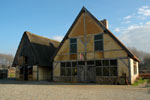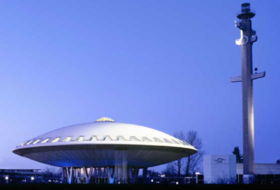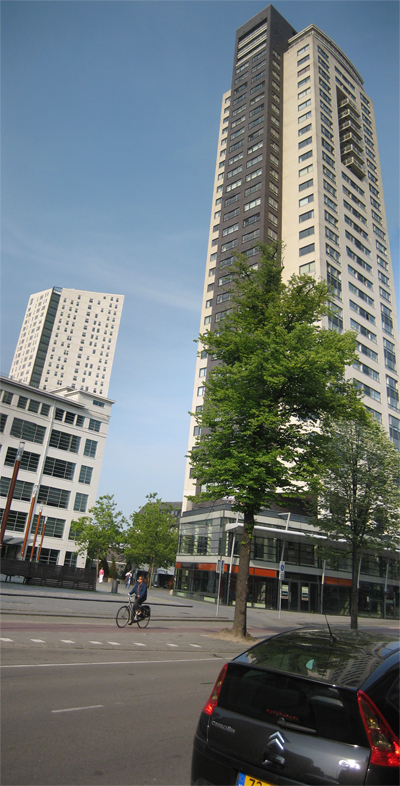Eindhoven
History
The site on which Eindhoven stands is the location of one of the oldest settlements in the Netherlands, with a history that stretches back some 2500 years. The city of Eindhoven is one of the oldest in the Netherlands, and was granted its town charter in 1232 by the Duke of Brabant. At the time ‘Endehoven’ consisted of around 170 houses and a castle. Over the centuries however, Eindhoven’s position located on key trade routes made it a target of enemy armies, and it was burned to the ground on several occasions.
 During the Dutch Revolt against Philip II of Spain, Eindhoven changed hands several times. The city eventually became part of the Netherlands in 1629. During the Industrial Revolution of the 19th century, Eindhoven began to grow as the textile and cigar industries flourished. But the real boom began when Philips founded their first light bulb factory in the city in 1891. In the following decades, Philips grew into one of Europe’s largest companies, and Eindhoven’s position as an important manufacturing centre became firmly established with the arrival of car and truck manufacturer Van Doorne's Automobiel Fabriek (DAF) in the 1920s. Unprecedented growth at the led to the annexation of the neighbouring villages: Woensel, Gestel, Strijp, Tongelre and Stratum are all now districts of Eindhoven.
During the Dutch Revolt against Philip II of Spain, Eindhoven changed hands several times. The city eventually became part of the Netherlands in 1629. During the Industrial Revolution of the 19th century, Eindhoven began to grow as the textile and cigar industries flourished. But the real boom began when Philips founded their first light bulb factory in the city in 1891. In the following decades, Philips grew into one of Europe’s largest companies, and Eindhoven’s position as an important manufacturing centre became firmly established with the arrival of car and truck manufacturer Van Doorne's Automobiel Fabriek (DAF) in the 1920s. Unprecedented growth at the led to the annexation of the neighbouring villages: Woensel, Gestel, Strijp, Tongelre and Stratum are all now districts of Eindhoven.
 During World War II parts of Eindhoven were destroyed by heavy bombing and only few old buildings survived. Significant reminders of the past are the 17th century Mariënhage cloister and the gothic St Catharinachurch (19th century). Recent years have seen a local renaissance, as Eindhoven moves into the 21th century as a forwardlooking city of technology. Business-services and industry are now two of the biggest employers in Eindhoven, with 27,000 and 20,000 people working in these sectors they strongly contribute in the total employment of 134,000 jobs. Spearhead sectors for Eindhoven are medical technology, automotive, mechatronics and ICT.
During World War II parts of Eindhoven were destroyed by heavy bombing and only few old buildings survived. Significant reminders of the past are the 17th century Mariënhage cloister and the gothic St Catharinachurch (19th century). Recent years have seen a local renaissance, as Eindhoven moves into the 21th century as a forwardlooking city of technology. Business-services and industry are now two of the biggest employers in Eindhoven, with 27,000 and 20,000 people working in these sectors they strongly contribute in the total employment of 134,000 jobs. Spearhead sectors for Eindhoven are medical technology, automotive, mechatronics and ICT.
Facts
- The Eindhoven region has over 725,000 inhabitants living in 21 municipalities with Eindhoven and Helmond as the largest.
- Eindhoven is the largest city in the southern Netherlands and the 5th largest in the country.
- Main cities in the Eindhoven region are Eindhoven and Helmond. The Eindhoven region is known for its ‘green’ character and has many parks and nature reserves. The surrounding countryside is packed with nature reserves, cycling and hikingroutes, horse-riding and camping and holiday resorts.
- As a trendsetting centre of innovation and technology Eindhoven strongly contributes to the 4th position of the region on the EU’s Lisbon Index for innovation.
- Eindhoven has a world-class Technical University, and the Design Academy Eindhoven.
- 40% of all R&D activities in the Netherlands take place in the Eindhoven region.
- Eindhoven is sometimes referred to as ‘Light Town’ - a reference to Philips Lighting.
- The closest big cities are Antwerp (Belgium) and Düsseldorf (Germany).
- The distance to the Dutch capital Amsterdam is 125 km.
- Its location on major transport routes and the presence of an airport make the region an important crossroads.
- Eindhoven is a city of sports: besides PSV’s football team the area also excels in swimming and horse riding. There are excellent sports facilities, including swimming pools, hockey fields, ice rinks, an indoor ski and snowboard centre,a climbing wall, country clubs, and several spectacular golf courses.
- The cultural climate in the Eindhoven region is diverse - the Van Abbe museum is internationally recognised for its modern art collection. The Music Hall (Muziekcentrum Frits Philips) offers a high-quality International Music Master Program.
- Eindhoven has a deserved reputation throughout the region for the quality and diversity of its shopping facilities, from weekly markets to top designer boutiques.



